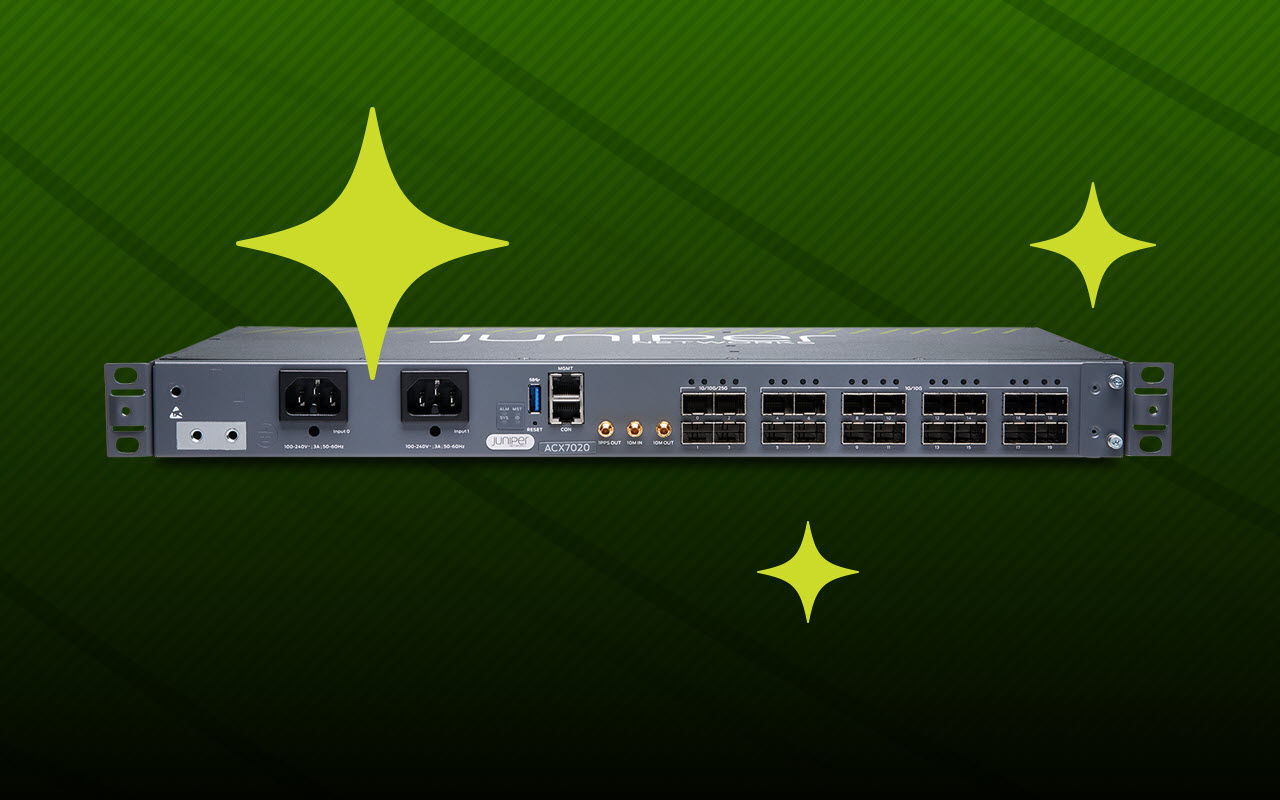Cutting-edge AI technologies demand unparalleled levels of data processing and computational power, so choosing the right networking infrastructure is critical for ensuring seamless operations. Among the available options, InfiniBand (IB) has long been known for its performance in specialized settings but comes with vendor lock-in and operational complexities. In contrast, Ethernet emerges as the natural and versatile network fabric for AI innovation, offering the scalability, performance, and flexibility necessary to meet the evolving needs of AI workloads.
The synergy of AI and Ethernet: A strategic alliance
As the AI and high-performance computing (HPC) industries evolve, the demand for networking infrastructure that can efficiently handle the explosive growth in data and computational requirements continues to rise. While InfiniBand has been a strong contender in certain high-performance environments, Ethernet is emerging as the dominant and universal networking fabric. The widespread adoption of GPUs and AI accelerators—hardware crucial to AI workloads—has helped drive this shift.
Several factors contribute to the industry-wide expectations pointing to a future where most, if not all, next-generation GPUs and accelerators will primarily operate with Ethernet, bypassing the cost and complexity of InfiniBand altogether. These include:
Avoiding vendor lock-in and embracing multivendor ecosystems
One of the primary concerns with InfiniBand is its inherent vendor lock-in, where proprietary technologies limit flexibility in network design and component selection. Unlike InfiniBand, Ethernet is an open standard supported by a wide variety of hardware and software vendors. This flexibility allows companies to adopt Ethernet-based networking across diverse GPU and accelerator architectures, giving them the freedom to scale, customize, and integrate without being tied to a single supplier.
With the rise of specialized GPUs and accelerators from companies like AMD, Intel, and Google (with their TPUs), Ethernet’s seamless integration across multivendor GPU environments and interoperability make it the ideal choice for enterprises seeking flexible hardware solutions without the risk of vendor lock-in. This enables businesses to focus on innovation and performance rather than connectivity issues.
Scalability and performance beyond proprietary solutions
As AI applications grow in complexity and scope, Ethernet delivers the scalability and performance required to support the growing demands of AI workloads. Ethernet’s ability to scale to 400G and 800G port speeds with 1.6T on the horizon, combined with advanced features like RDMA over Converged Ethernet version 2 (RoCE v2), offers low-latency, high-throughput connectivity, comparable to (or exceeding) InfiniBand. This makes it a robust alternative for next-generation accelerators that require ultra-high bandwidth for optimal performance, empowering organizations to expand their AI initiatives, integrate diverse data sources, and drive innovation without constraints.
Cost efficiency and ease of deployment
Ethernet is far more cost-effective and easier to deploy than InfiniBand. Leveraging the existing data center knowledge base, Ethernet offers an expansive pool of available resources and expertise. As AI continues to scale, organizations require networking solutions that are both cost-efficient and easy to integrate into their existing setups. Ethernet’s ubiquity in hybrid cloud environments allows for seamless communication between on-premises hardware and cloud-based GPUs, making it a practical choice for organizations aiming to scale AI initiatives efficiently and affordably.
The strategic alignment between AI innovation and Ethernet as the primary network fabric forms a powerful partnership that drives transformative progress. This synergy enables faster advancements and delivers more efficient solutions, shaping the future of technology and its value to enterprises and their customers.
Unleashing AI performance with Ethernet
AI’s transformative potential relies on processing massive datasets, complex algorithms, and real-time decision-making—all of which demand a robust and scalable network fabric. Ethernet’s high-speed connectivity, low latency, and congestion management capabilities, particularly with advancements like RoCE v2 and Global Load Balancing, enable seamless data flows across vast AI environments.
Ethernet has proven to be the ideal fabric for AI, providing the bandwidth, performance, and flexibility necessary for:
- Model training: AI models, especially at scale, require an infrastructure capable of managing massive datasets and iterative learning processes. Ethernet’s scalability, with port speeds of up to 800G, ensures that AI training workloads can operate efficiently without bottlenecks. With advanced congestion management and RDMA support, Ethernet can handle data-intensive tasks like training large AI models, running inference at scale, and supporting distributed systems.
- Inference and real-time decision-making: Low latency is paramount in AI inferencing, especially for applications like autonomous driving, financial trading, and healthcare diagnostics. Ethernet’s architecture ensures fast, reliable data transmission for quicker, more accurate outcomes.
- Data processing at scale: AI workloads generate and consume vast amounts of data. The high throughput capabilities of Ethernet make it a perfect fit for HPC clusters and distributed AI systems that rely on smooth, high-volume data transfer.
Companies like Meta, NVIDIA, and Oracle have already demonstrated Ethernet’s potential by adopting it for large-scale AI applications, further validating its effectiveness for AI innovation. This includes:
- Meta’s Llama 3.1 model: Meta successfully trained this cutting-edge AI model using a massive Ethernet RoCE v2 cluster of 24,000 GPUs, highlighting Ethernet’s ability to support large-scale AI model training without packet loss.
- Oracle’s shift from IB to Ethernet: Oracle’s Exadata transitioned from IB to Ethernet fabrics to support demanding workloads, recognizing Ethernet’s benefits in scalability and operational simplicity.
- NVIDIA’s adoption: Industry giant NVIDIA, now a member of Ultra Ethernet Consortium, has also embraced Ethernet-based solutions, leveraging their seamless integration with AI workloads and ability to support large-scale, multi-GPU clusters effectively.
Ethernet’s capabilities transcend mere connectivity. This unparalleled performance translates into accelerated AI innovation, increased operational agility, and enhanced decision-making capabilities for businesses across diverse sectors.
Reliability and resilience: Ethernet’s assurance for AI environments
Ethernet’s long-standing history, spanning from the early days of Token Ring and SONET to its current role in cutting-edge AI networks, highlights its reliability and resilience. Its collaborative, open ecosystem allows companies to innovate without being tied to a single vendor, enhancing network design flexibility while reducing operational complexities.
Furthermore, the Ethernet standards community has continually driven innovations in congestion management, fault tolerance, and real-time performance optimization, ensuring that AI applications can run smoothly even in the most demanding environments.
Operational flexibility and Total Cost of Ownership (TCO)
Ethernet offers operational ease by leveraging existing skills and tools, ensuring consistency across data centers and beyond. With a lower TCO compared to InfiniBand, Ethernet’s widespread availability, compatibility, and lower barriers to entry make it a more pragmatic and cost-efficient choice for enterprises integrating AI into their infrastructure.
Paving the way with Juniper
Juniper Networks is the leader in the realm of networking for AI-driven data centers due to its focus on innovation, performance, and scalability tailored to the unique demands of AI workloads. Here are some key reasons why Juniper excels in this space:
High-Performance Infrastructure
- Purpose-built fabric: Juniper’s switches and routers, such as the Juniper Networks™ QFX Series and PTX Series, offer high port density, ultra-low latency, and high-speed connectivity (e.g., 400G, 800G), ideal for AI and machine learning (ML) applications that require massive data movement.
- High-bandwidth fabrics: Juniper supports robust and scalable network fabrics like EVPN-VXLAN, ensuring efficient and lossless data transmission across AI clusters.
AI-Driven Automation
- Juniper Apstra intent-based networking: Juniper Apstra simplifies data center operations through intent-based automation, ensuring consistent policy enforcement, validation, and optimization of AI workloads across multivendor platforms.
- AI-enhanced operations: Juniper Apstra Cloud Services extends its AI capabilities to the data center, providing proactive insights, anomaly detection, and automated troubleshooting.
Support for AI workloads
AI models require significant computational resources, which in turn demand a scalable and adaptive networking infrastructure. Juniper’s solutions are designed to scale with the growth of AI datasets and model complexity.
Open architectures
Juniper embraces open standards and disaggregated solutions, making it easier for enterprises to integrate their networks with AI frameworks and tools without vendor lock-in.
Security
- Zero Trust Networking: Juniper’s AI-driven security solutions, including the Security Director Cloud, help protect sensitive AI workloads from breaches and ensure compliance.
- Micro-segmentation: This feature isolates AI workloads, ensuring secure data processing across distributed systems.
By leveraging its innovative networking technologies, robust automation, and AI-driven insights, Juniper helps organizations build AI-ready data centers that support demanding workloads while maintaining flexibility and operational efficiency.
Moreover, Juniper’s Ops4AI Lab provides a dedicated environment for enterprises to explore, test, and optimize networking solutions tailored for AI/ML-driven data center operations. The lab showcases Juniper’s capabilities in building and managing networks that support AI workloads, offering hands-on access to cutting-edge technologies and tools.
Powering the future of AI with Ethernet
As AI continues to revolutionize industries and push the boundaries of what’s possible, Ethernet has firmly established itself as the cornerstone of AI innovation. Its proven reliability, performance, and scalability make it indispensable for supporting the rapid expansion of AI workloads. In contrast to InfiniBand, Ethernet offers a more robust and future-proof solution that grows alongside AI’s demands, offering flexibility for phased buildouts and seamless infrastructure expansion.
The ongoing evolution of Ethernet, with technologies like enhanced RoCE, and programmable switches, ensures low-latency, high-performance networking for next-generation AI accelerators. Ethernet’s open and collaborative ecosystem with high-speed connectivity, innovative congestion management, and remarkable scalability ensure that enterprises are empowered to push the frontiers of AI with confidence. By embracing Ethernet as the defacto networking standard, organizations unlock the full potential of their AI applications, driving operational efficiency and fueling innovation in the AI era.

























